If you start using DCC, someday you may feel the need to go further than just controlling trains. There are numerous options today: smart touch screen command centers, PC control… But the prerequisite for automating a layout is to implement basic train detection: modules that will monitor your track sections and tell your DCC system whether or not a train is there.
Here is a quick introduction of 2 popular systems used for train detection: S88 and Loconet.
Overview of both buses:
S88, the mother of all detection
One of the oldest – and still popular – detection bus is called S88. It was created by/for Märklin more than 15 years ago. It is simple, and most of all cheap now that it is in the public domain.
S88 is a “serial” bus: all modules are connected in a chain, one after the other. There is no “adressing” per say, each feedback address depends on the position of the module in the chain, and how many feedback addresses the module has (8 or 16 in most cases):
The modules are connected via a standard 6-pin cable from a module to another, and finally to the control station (or PC interface).
There is however an alternative to this flat cable (prone to interferences in some cases): the use of standard computer network cables as a replacement. There is a semi-official norm for this new S88 connection, called S88-N. This standard is now being adopted by many manufacturers (mostly German), who integrate network (RJ45) plugs directly in their modules.
Just a common sense piece of advice: using Network cables to connect your S88 modules does NOT mean you can plug your module to a computer network; it simply means the cables are shielded, and will be less prone to interference than the legacy flat cables of the S88 norm.
Loconet, the allrounder
Loconet was developed by the US-based company Digitrax. It is semi-open, as the company allows other companies to distribute product based on the technology, and publishes extensive documentation.
It differs a great deal from S88, for 2 mains reasons:
- It is not only an occupancy detection bus
There is a wide variety of Loconet modules, the network is not limited to occupancy detection. There are DCC switching modules, sound modules… - The network topography is pretty much up to you
As opposed to S88, Loconet can be arranged the way you want. As long as you don’t make a loop, you can do anything you want (tree branches, simple chain…). It is in fact very similar to a computer network.
A nice consequence of this, is that you attribute addresses to the module, wherever they are on the network: you can add a module in a chain or a branch without having to change the addresses of any other module.
Loconet connections are based on RJ-12 cables, which is a standard phone connector in the US, that Europeans are used to seing on devices such as computer or DSL modems. One should note however, that RJ12 uses 6 cables, instead of the 4 cables present in the standard RJ11 phone plugs (in other words, don’t use phone cables for Loconet).
Which one do I need?
Well, it all depends on what you want to achieve. In my case, I started with S88. There are many people complaining about S88 reliability (interferences on large layouts). These reports are surely true. But if you have a reasonably sized layout, and use the RJ45 S88-N connectors instead of the flat 6 pin S88 cables, you have little chances of encountering reliability issues.
Loconet may seem a bit more complex, but is allows much more. In my case, I ended up converting to Loconet after deciding to build a modular layout. What this means for me is that I can add a new module in the middle of my layout without having to reconfigure all feedback addresses numbers.
Of course, all this depends on which central station you are using. Here is a – far from exhaustive – list of S88 or Loconet capable interfaces:
More about the modules will be discussed later in this blog. I hope this introduction helped those some of you, who are starting to feel the need to know where your trains are!
What is your preference, do you favor another bus type (XpressNet…)? Don’t hesitate to comment.

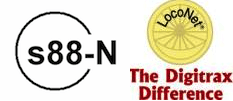


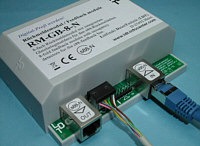

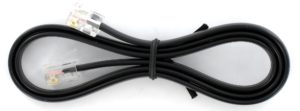






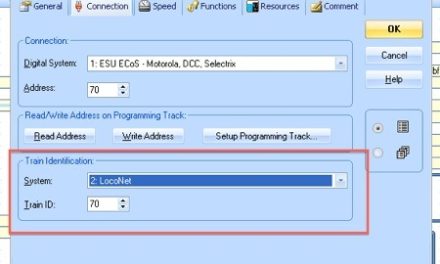

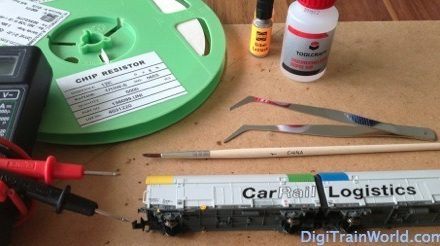



Bummer to see the somewhat limited options for LocoNet now that you got be excited to consider that direction! I’m trying to determine if I want my next layout to be more ‘modular’ in design, or not.
Great article by the way. Your blog is very helfpul for me in figuring out what I really want from my next layout!
Great Post! Loconet seems really useful. Shame that the ESU does not support it! Arghh! Thanks for this- it’s excellent info as I try and deterine what I want from my next layout!
Well, ESU actually does have a Loconet adapter for the Ecos II now: http://www.esu.eu/en/products/digital-control/lnet-converter/
It comes with a big hidden caveat IMHO: it is (for now) impossible to send the Loconet occupation information to a PC via the ECOS. So using Loconet for detection + ECOS II with Lnet adapter is a bad idea (not future proof).
But I still love my ECOS II. One future-proof setup could be:
– ECOS II + LNet converter (e.g. for cheap Loconet throttles)
– Using the ECOS’ S88 port or proprietary ECOSlink for occupancy feedback (these can be transmitted to a PC if ever needed).
– Of course, using smartphones with an app (or even the fancy ESU Mobile Control II) is also always an option.
The cleanest Loconet option these days is the Roco Z21 (the “black” version with the big Z, not the white version). But in that case, no fancy touchscreen, you need to “bring your own screens” (free apps on phones, tablets, or expensive PC software) or connect physical Loconet throttles. And again, since you mentioned the ESU Mobile Control II on your website, remember: although you can (already) install and use the Z21 app on the ESU Mobile Control II, the MCII’s buttons and physical throttle will NOT work unless Roco decides to update their app…for the competition. Which basically means, if you really need to have an ESU Control II (and I would tend to agree 😉 ), using it with a Z21 would bring no added value compared with the same Z21 app on an old iPhone or Android phone without physical buttons….
I stand by my remote control analogy: touchscreen are great, physical buttons remains vital. Just as you need to “feel” where the volume buttons are with the eyes still on the TV, you need to “feel” where the throttle is while keeping the eyes on the train. No smartphone or tablet can provide this… the ESU Mobile Control II is the only solution to bring (on paper) all advantages together.
Yep, for command stations and DCC…it’s also a mess, but it’s becoming a fancier mess 😉
Thanks again. Yeah, like you, I can’t ‘run’ trains just off a touch screen. I think your Ecos II solution makes the most sense.
Nice clear concise description. I have the Roco Z21. IT is really a very nice unit and I love the interface, but as you said, I would love a knob to turn. My end goal was however to run a computer with it and I could hide the Z21 very easily. One question: The Z21 doesn’t use a fully compatible LocoNet like digitrax. For instance the Digitrax BDL168 can’t be used in the LocoNet bus, however the Uhlenbrock 63320’s can. So the Z21 has a different type of LocoNet Bus than here in the USA. It is a Uhlenborck type LocoNet Bus. Then you have the R bus, which is limited to 128 inputs (I think.) It can all get so confusing sometimes. The L Bus is the way to go in my opinion, however, I was wondering if the Z21 can use a combination of RBus and LBus together. One could use the RBus to designate stopping zones with out cutting rails (Reed Switches) and then use the LocoNet Bus for the big zones. the advnatage of reed switches is you can move them incase you need to adjust a stopping zone. Cutting rails is just like a tatoo . . . it is forever . . . haha 😉 Just thinking out loud. Tell me to shut up, I’d be good with that! haha! Thoughts?
Hi Curtis, I’m not an expert on Loconet so I’m afraid I cannot help. I would however recommend cutting tracks for detection zones: yes, it is permanent, but the DIY with the reeds and other contacting methods is something I am personally glad to have relegated to the past.
As for the Z21 Loconet, I am surprised to read it doesn’t work with the Digitrax BDL168. Are you 100% sure?
I know some EU manufacturers (Uhlenbrock mainly) had weird implementations of Loconet (mainly related to booster connections I think), but detection is a “basis” function of the Bus: it would be disappointing for Roco/Fleischmann to have missed than on the Z21.
Pierre, just an update. The Roco Z21 is a loconet T device and Digitrax is true Loconet B device. Roco is coming out with an adapter for loconet T to B, so by the end of the year, Roco should be able to use all Digitrax components!!! I am fine with Loconet T though as there are plenty of products out there that support it. I am using Uhlenbrock 63320’s and Digikeijs components for detection and I am using DCC decoders for switches. I have my layout running on Traincontroller Gold and all seems to be working well. All the best.
Hi Curtis,
Thanks a lot for your feedback. In fact, I’m not a Loconet expert and this difference between T and B Loconets is still kind of a mystery to me. The only thing I knew was that Uhlenbrock kind of tweaked things a little. Any link you may have that might clarify things?
Thanks!
Pierre
Hello, my Pico Zentrale has no entry for any net, just good for loko-control. I’m looking for a PC-program that can handle/convert S88-N signals and show status on a trackplan on a wall-display, trying to do i simple (and low cost), I’m a DIY-freek. The display is just for looking at, the track- and signal-switching will happen via an old Wireless phone.
Anybody have an idea of a usefull program for my needs?